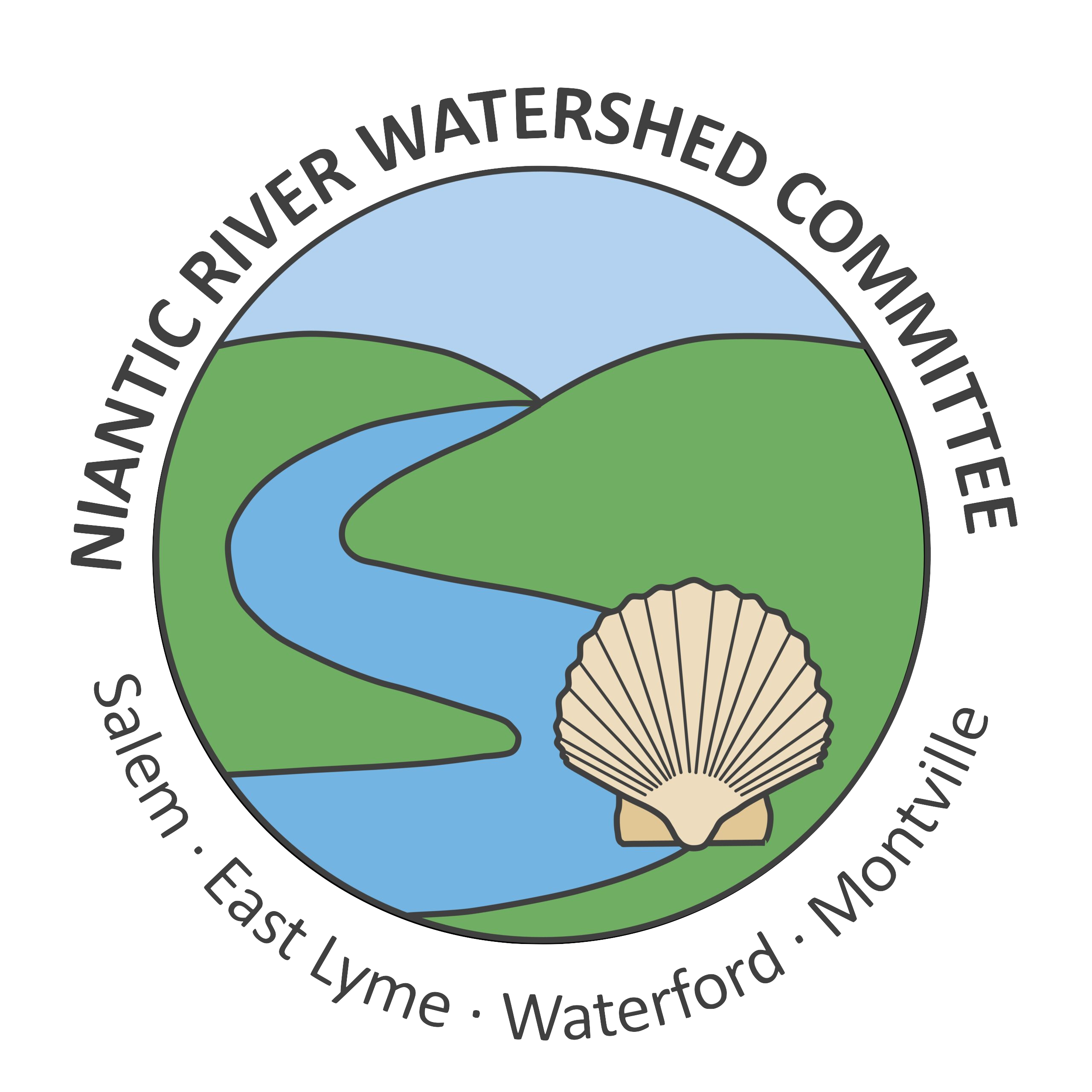Water Quality Goals and Objectives
One of the primary goals of the Niantic River Watershed Committee is to protect and improve the water quality of the Niantic River. The Niantic River is an important economic and recreational resource for local and regional residents and visitors. The river was once famous for its annual crop of bay scallops, and is still a popular destination for shellfishing, boating and swimming. The success of bay scallops is inextricably tied to the health and abundance of eelgrass beds, and in the Niantic River, eel grass beds have been in decline for the last several decades. Water quality testing and research conducted by federal, state and local organizations, including the US Geologic Survey, the CT Department of Agriculture Bureau of Aquaculture, Ledge Light Health District, Connecticut College, University of Connecticut, Save-the-River/Save-the-HIlls, NRWC and others, has indicated that the Niantic River is very much a river on the edge.
A River on the edge
While water quality in the Niantic River is generally good, at certain times of the year and under certain conditions, the quality of the river water decreases, making it unsafe for shellfishing and other recreational activities. This is especially true after heavy rainfalls. Rain runoff, in its journey across hard surfaces like roofs, roads and parking lots to nearby storm drains, picks up a wide variety of contaminants and carries them into the storm drain system and then out into the Niantic River and its tributaries. These contaminants are called nonpoint source pollutants, or NPS for short. NPS pollution cannot be traced back to a single easily identifiable location, like a pipe, but instead is the cumulative result of minute amounts of pollutants that are found across the landscape, that are mobilized by rain fall (or snowmelt in the spring), concentrated and carried into waterways, where they can harm the environment. Folks who regularly shellfish in the Niantic River know that the recreational shellfish beds close after every rainfall, because stormwater can contain fecal bacteria and other pathogens that can contaminate shellfish and make them temporarily unsafe to eat. These same pathogens can also make the water temporarily unsafe to swim in. Other pollutants, including nutrients, especially nitrogen, can impact the quality of water in the Niantic River, by promoting excessive plant and algae growth. Nitrogen is essential to tissue formation in plants, including aquatic plants, macro-algae (aka seaweed), and micro-algae (including plankton). Nitrogen in the Niantic River can come from lawn and agriculture fertilizer and human and animal waste (including leachate from septic systems). During the hot summer months, when rainfall amounts are low and the use of fertilizer throughout the watershed is high, concentrations of nitrogen in the Niantic River increase, spurring the growth of aquatic plants, seaweed and micro-algae. The rapid growth of micro-algae, commonly called algae blooms, occurs mid-summer and can cause the water to become murky. This limits the amount of light that reaches eelgrass and other aquatic vegetation, impairing its ability to conduct photosynthesis, weakening the plant and making it susceptible to other environmental stresses, including extreme water temperatures and disease. When the algae has used all the available nitrogen in the water, it dies and falls to the bottom of the river. There, it is colonized by bacteria that break the tissue down. These bacteria are aerobic – they breathe in oxygen, and release carbon dioxide. In great enough amounts, these bacteria can utilize all the free oxygen in their vicinity, creating zones of low oxygen (hypoxic) or even oxygen-less (anoxic) zones. Fish are able to swim clear of these areas, but other estuarine species, including snails, shellfish, sponges, marine worms and other invertebrates that constitute a critical part of the estuarine food chain, are not so mobile and are likely to perish.
Protecting and Improving Water Quality
The Niantic River Watershed Committee and our many partners are committed to protecting and improving water quality in the Niantic River in order to protect aquatic species and keep the river safe for recreation. In order to evaluate watershed-wide water quality, we conduct a variety of water quality assessments and use the data to identify potential locations for water quality improvement projects.
Water Quality Monitoring
Since 2012, we have conducted year-round water quality monitoring in the three primary tributaries to the Niantic River – Latimer Brook, located in Montville and East Lyme, and Stony Brook and Oil Mill Brook, located in Waterford. We document baseline water quality characteristics including water temperature, dissolved oxygen levels, specific conductance (measure of ions in the water) and pH. We also measure the levels of nitrate-nitrogen in the tributary streams to determine from what parts of the watershed nitrogen is being delivered to the Niantic River, and in what amounts. We use this information to identify where water quality is not as good as it could be, and where a water quality improvement project might be beneficial. We conduct annual stream macro-invertebrate surveys called River Bioassessments for Volunteers (RBV) each fall using a protocol developed by CT DEEP. RBV identifies the presence or absence of riffle-dwelling stream insects that are sensitive to water quality. This assessment not only indicates relative water quality, but also indicates if the aquatic habitat is healthy and supportive of fisheries and other aquatic species. To learn more about these and other water quality assessments visit our Water Quality Monitoring page.
Water Quality Improvements
Using water quality data and other information collected through our monitoring program and data collected by our partners, we identify opportunities to conduct water quality improvement projects throughout the watershed. These projects target the primary NPS threats to the Niantic River, bacteria and nitrogen, reducing the amount of NPS that enters the Niantic River. Visit our Stormwater Management page to learn more about completed and upcoming water quality improvement projects.
